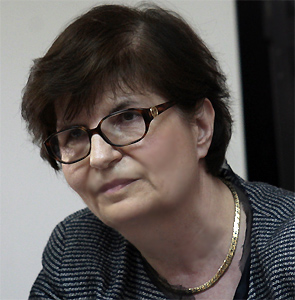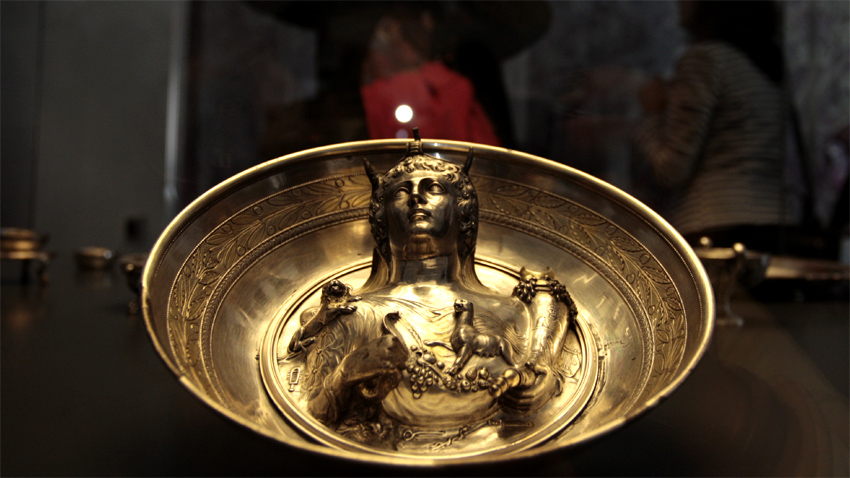The exhibition Silver from The Louvre: the Treasure of Boscoreale is on display at the National Archaeological Museum in Sofia. This is the first Louvre selection arranged in this country for the past 30 years. It is an exchange project after the major display The Saga of the Thracian Kings, Archeological Discoveries in Bulgaria that was opened last April at The Louvre and has been very successful so far. Boscoreale is a village in Italy located close to the ancient Roman cities of Pompeii and Herculaneum.
 More details about the treasure from Mrs Françoise Gаultier, Director of the Department of Greek, Etruscan and Roman Antiquities at The Louvre.
More details about the treasure from Mrs Françoise Gаultier, Director of the Department of Greek, Etruscan and Roman Antiquities at The Louvre.
„Found in 1895 in a Roman villa on the outskirts of Pompeii buried in the ashes of the erupted volcano of Vesuvius the treasure of Boscoreale features gold jewelry, toiletries and about one hundred household utensils made in 1 c. AD. It showcases the foremost achievements of ancient Roman goldsmithing. So we imagined that it would be interesting for Bulgarian audiences to compare this valuable selection with a range of silver objects excavated in Bulgarian territory, in what used to be Moesia and Thrace during the Classical Antiquity. This is a way for Sofia viewers to become aware of the adaptation of Roman models in contact with local traditions inherited from the former Odrysian Kingdom.”
How did the treasure of Boscoreale end up in The Louvre? Baron Edmond de Rothschild bought out most of it to donate it to the reputed museum. Over time it has been kept in the royal chambers of the palace. The current display in Sofia presents thirty objects from the treasure - mostly cups and dishes. There is also a pair of gold earrings with green glass incrustations. They were owned by a woman who died together with two men in the eruption of Mount Vesuvius. Whether her name was Maxima as the inscription on some of the objects reads remains an unresolved secret.

Parallel to this exhibition another display was unveiled at the National Archaeological Museum. It consists of artifacts from the Regional Museum of History in the southeastern Bulgarian city of Stara Zagora. The selection has 118 objects that were owned by wealthy Thracian aristocrats. They were found in a villa from the Roman period built in 1 c. AD in the locality of Tchatlaka close to Stara Zagora.
„The exhibition includes pieces that are symbolic for our museum and for the city of Stara Zagora, i.e. the bronze helmet-mask from Tchatlaka featured on the poster for the Sofia display. This piece has been on tour in many countries of Europe and Asia”, explains Angel Dinev, Director of the Stara Zagora Regional Museum of History. “Its most recent tour was as part of an international exhibition in Ostrava, the Czech Republic, from December 2014 till March 2015. There it was very popular among viewers. The current exhibition features a unique sword decorated with gold, and with a jade clamp with images of a dragon suggesting the Far East origin of the weapon. The objects are dated to 1-4 c. AD - the classical period of the Roman Antiquity in the Bulgarian lands.”

A richly ornamented silver cup reminiscent of the Boscoreale style spans a bridge between the two selections. The cup was found 4 km away from Stara Zagora. The Louvre selection is on until 23 August and the one from Stara Zagora, until 10 September.
English Daniela KonstantinovaOn the upper line of the gallery of photos: items from the collection “Silver from the Louvre. The Boscoreale Treasure”
On the lower line of the gallery of photos: objects from the exposition “The Roman villa at Chatalka. The wealth of a Thracian aristocrat” from the collection of the Regional History Museum of Stara Zagora
Photos: National Archeology and History Museum with BAS; BGNES and BTA
"Bulgarians decorate the world," tells us Emilia Juеcker, who has been living in Germany for decades. The diversity of our cultural traditions, literature, and folklore is at the heart of the seventh annual meeting "Bulgarian Speech, Music, Colors and..
The second edition of the Festival of Bulgarians and Descendants of Bulgarians in Argentina will be held on November 30 at the San Juan Bosco School in the Argentine city of Comodoro Rivadavia. “This Saturday, our beloved society will welcome..
The fourth national Biennial of Illustrations opens today in the triangular tower of Serdica, part of the Regional Museum of History in Sofia. As during its previous editions, the biennial is not themed. “The aim is to enable the authors to..
World-famous opera singer Sonya Yoncheva has received the "Musician of the Year, 2023" award. It was presented to her by BNR Director General Milen..
Romanian President Klaus Iohannis awarded maestro Nayden Todorov the Order of Cultural Merit in the rank of Grand Officer, Category F - Promoting..

+359 2 9336 661
